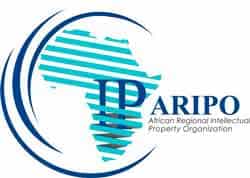Vias de proteção
Formas de proteger a sua invenção
As Patentes protegem as suas invenções. Após de um pedido bem sucedido, ser-lhe-á atribuído um monopólio para a explorar a sua invenção durante um determinado período de tempo.
As Patentes Nacionais são a forma mais eficiente de defender a sua invenção se apenas a quiser proteger num só país. Se isto não for suficiente para cumprir os seus requisitos, poderá optar pelos seguintes acordos internacionais:

ARIPO
Permite que um único depósito de patente seja eficaz em todos os estados-membros designados

PCT (Tratado de Cooperação em matéria de Patentes)
O sistema da PCT simplifica a internacionalização de patentes, que por sua vez facilita o depósito a nivel nacional.
Informação Adicional
Discuta a sua estratégia de Proteção de Propriedade Intelectual connosco
Se necessita de proteger a sua Propriedade Intelectual no estrangeiro, confie na nossa rede de escritórios e parceiros para assegurar um serviço de qualidade em qualquer ponto do globo.
Se tiver questões adicionais, teremos todo o gosto em agendar uma teleconferência para esclarecer as suas dúvidas.
Agendar teleconferênciaSerra Leoa
Detalhes e Períodos
Reivindicação de prioridade
Disponível
Exame Substantivo
Indisponível
Órgão responsável por pedidos de caducidade
Instituto
Período estimado até concessão
3 anos
Requisitos de uso e caducidade
4 anos
Requisitos do Registo Nacional
Requisitos do Pedido de Registo
- Procuração com assinatura simples.
- Dados do requerente.
- Título da patente, resumo, descrição, reivindicações e desenhos.
- Cópia certificada do documento de prioridade, com tradução inglesa.
Requisitos de Renovação
- Procuração com assinatura simples.
Requisitos de Transmissão
- Contrato de cessão simplesmente assinado pelo cedente e pelo cessionário.
- Procuração assinada pelo cessionário.
Requisitos de Mudança de Nome
- Procuração com assinatura simples.
- Cópia certificada do certificado comercial ou extracto do registo comercial.
Requisitos de Mudança de Morada
- Procuração com assinatura simples.
- Cópia certificada do certificado comercial ou extracto do registo comercial.
Requisitos de Licenciamento
- Procuração com assinatura simples.
- Contrato de licença assinado por ambas as partes.
Requisitos de PCT
Requisitos do Pedido de Registo
- Procuração com assinatura simples.
- Dados do requerente.
- Cópia do documento de prioridade (se aplicável).
- Título da patente, resumo, descrição, reivindicações e desenhos.
- Contrato de cessão.
- Publicação internacional.
- Relatório de Pesquisa Internacional.
Requisitos de Renovação
- Procuração com assinatura simples.
Requisitos de Transmissão
- Procuração com assinatura simples.
- Contrato de cessão simplesmente assinado pelo cedente e pelo cessionário.
Requisitos de Mudança de Nome
- Procuração com assinatura simples.
- Cópia certificada do certificado comercial ou extracto do registo comercial.
Requisitos de Mudança de Morada
- Procuração com assinatura simples.
- Cópia certificada do certificado comercial ou extracto do registo comercial.
Requisitos de Licenciamento
- Procuração com assinatura simples.
- Contrato de licença assinado por ambas as partes.
Últimas noticias


